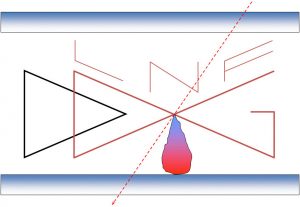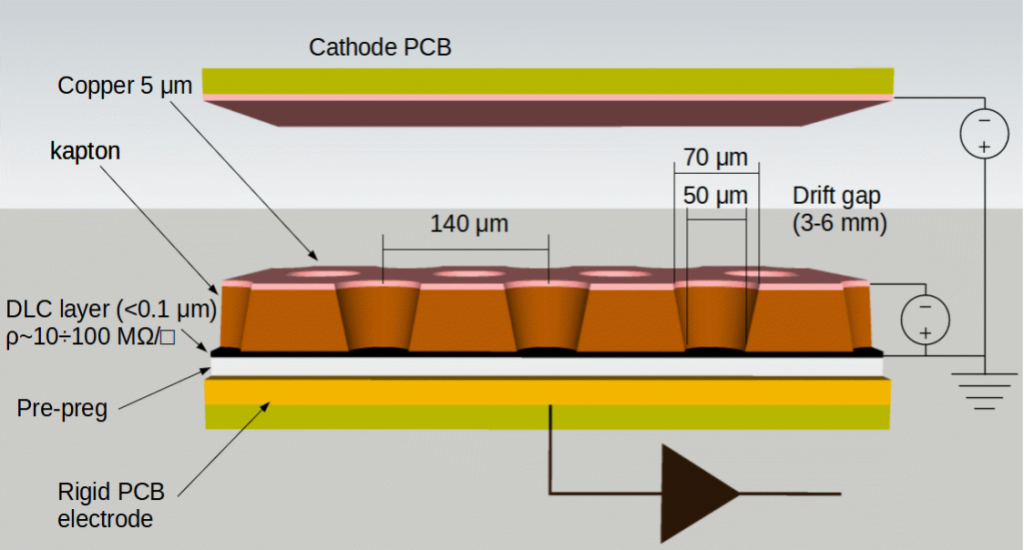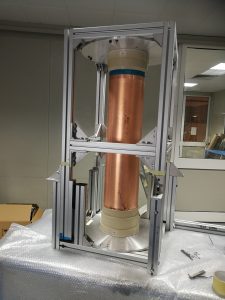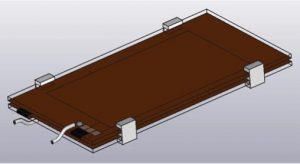 The Detector Development Group (DDG LAB Frascati INFN) has been involved since 1985 in the R&D, design and construction of gaseous detectors.
The Detector Development Group (DDG LAB Frascati INFN) has been involved since 1985 in the R&D, design and construction of gaseous detectors.
In the period till 2000 the group worked on: wire tubes, Resistive Plate Counters with glass electrodes (named Glass Spark Counter – GSC) and large drift chamber. Even if these are “classical” detectors, the work of this group often produced innovative devices. The drift chamber for the KLOE experiment is indeed the largest ever built.
During the last two decades the focus has been moved on a new class of radiation detectors: Micro-Pattern Gaseous Detectors (MPGD), born conventionally on 1988 and pushed forward by the work of Y. Giomataris (Micro-Megas, 1997) and F. Sauli (GEM, 1998). The DDG group worked on GEM detectors for the muon stations of the LHCb (2000) experiment at CERN.
This know-how has been exploited for the construction of the first cylindrical GEM detector (2006) for the KLOE-2 experiment at DAΦNE electron-positron collider at LNF.
Meanwhile the idea to develop a more compact and spark-protected MPGD was already ongoing, in collaboration with CERN-GDD group, and soon a new detector was introduced: the micro-Resistive WELL (m-RWELL). The device borrows the shape of the amplification channels from GEM and a resistive stage from Micro-Megas: a Diamond-Like-Carbon (DLC) film protecting the whole detector against the discharges (Fig. 2).

The m-RWELL represents in this moment the main activity of the DDG group because it has been proposed for high energy physics experiments (LHCb, CREMLINplus and IDEA) as well as for neutron detection (ATTRACT-URANIA, URANIA-V). In parallel several groups worldwide are proposing new apparatus or upgrades based on m-RWELL technology: CMD3, Budker Institute (Ru); X17 – CERN-INFN; York Long Chamber, University of York (UK); STCF (China); EIC and CLAS12, Jlab (USA).
LHCb – phase II upgrade (2017): the m-RWELL is the candidate to substitute the GEM detectors of the innermost region of the muon stations. Because of the high particle rate, new layouts for the grounding network of the detectors are under characterization. The capability to stand the particle flux up to 20 MHz/cm2 has been measured with both X-rays and particle beams.

CREMLINplus (2020): the Super Charm-Tau Factory (SCTF) will be an electron-positron collider to be built in Russia in order to study final states with c quark or tau lepton in the final state. The apparatus to detect these states will need a light inner tracker to reduce systematic errors in the particle trajectory reconstruction. The proposal is to build a Cylindrical-RWELL with an innovative modular design. The modules are roof tile shaped with the possibility to open the detector and replace them in case of malfunctioning. A first prototype has been realized at the end of 2021 (Fig. 3).
IDEA (2020): in this apparatus for a future electron-positron collider (FCC-ee and CepC) the m-RWELL finds room for two detection systems: the pre-shower, to identify the decayed π0 before the produced gammas enter the calorimeter, and the muon tracker. The challenge here is the mass production of about 20.000 detectors 50×50 cm2 active area for a global detection surface of 5000 m2.
ATTRACT-URANIA (2019), URANIA-V (2021): the safety of citizens passes also through the fight against radioactive materials smuggling and the monitoring of nuclear waste. These tasks require efficient neutron detectors. The signal creation in particle detection is based on Coulomb interactions, so electrically neutral particles cannot be directly detected. The introduction of a converter makes this detection possible: in case of neutrons, they scatter on the converter releasing slow charged particles. In the framework of the European founded project ATTRACT-URANIA and the CSN5 founded project URANIA-V, the LNF-DDG group is working on the optimization of this converter, realized sputtering parts of the detector with boron carbide, in collaboration with INFN-Fe and with the European Spallation Source Coating Workshop (Lund, SWE). Efficiency up to 5% has been measured with neutron at the HOTNES source facility of the ENEA-Frascati. Thanks to its compactness, a stack of m-RWELL can be realized in a limited space while increasing the neutron detection efficiency.

SRPC (2019): aside the activities on m-RWELL, the DDG group started a new R&D on Surface Resistive Plate Counters (SRPC, Fig. 4). The technology on DLC sputtering is indeed suggesting a possible introduction in the well-established field of this technology. The goal is to transfer the resistive MPGD technology based on DLC to realize SRPCs with a rate capability up to or larger than 10 kHz/cm2.
 INFN-LNF Laboratori Nazionali di Frascati
INFN-LNF Laboratori Nazionali di Frascati